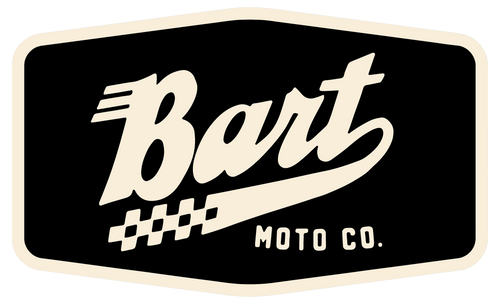When it comes to tuning or upgrading small engines like the classic Honda CT70 or popular pit bike motors like the Lifan 125, YX140, and ZS190, one of the most common questions is:
“What intake and carburetor bore sizes should I use? Should the intake bore match the carb bore or the cylinder head port?”
It might seem straightforward to just make everything as big as possible, but the reality is a little more nuanced. Let’s break down how intake and carburetor sizing works — and what you should know to get the best power, throttle response, and reliability from your motor.
The Basics: What Sizes Are We Talking About?
Every small engine has three key bore sizes in the intake system:
- The Cylinder Head Port Bore — The opening on the cylinder head where the intake manifold mounts.
- The Intake Spigot Bore — The opening on the intake manifold or carb adapter that mates to the carburetor.
- The Carburetor Bore (Venturi Size) — The narrowest section inside the carburetor where air speeds up and fuel is atomized.
Here’s a quick reference of typical bore sizes for the motors we work with:
| Engine Type | Head Port Bore | Intake Spigot Bore | Common Carb Bore Sizes |
|---|---|---|---|
| Honda CT70 (Original) | 22mm | 16mm | 14–16mm |
| Lifan 125 | ~26mm | 26mm | 22–26mm |
| YX140 | ~28mm | 28mm | 26–28mm |
| ZS190 | ~30mm | 30mm | 28–32mm |
Why Does the Honda CT70 Have a Smaller Carb and Intake Spigot than the Head Port?
If you look at the original Honda CT70, the head port is 22mm, but the intake spigot and carburetor are just about 16mm. That’s an intentional design choice — and it works for a few key reasons:
-
Fuel Atomization and Air Velocity
The smaller carb and intake spigot act like a venturi, speeding up air flow which helps mix fuel better for cleaner, more efficient combustion. If the intake spigot was the same size as the 22mm head port, air would slow down and fuel atomization would suffer. -
Optimized Low- to Mid-Range Power
The smaller carb helps keep air velocity high at lower engine speeds, improving throttle response and torque where most riders use the bike. -
Emissions, Fuel Economy, and Reliability
A smaller carb and intake spigot help the engine run smoother, idle better, and meet emissions standards — all important factors for OEM designs.
How Should You Match Intake and Carburetor Bores?
Here are some guidelines to help you pick or design your intake system:
-
Match the Intake Bore to the Cylinder Head Port (or slightly larger)
This prevents a restrictive bottleneck that kills airflow and power. -
It’s OK (and common) for the Carburetor and Intake Spigot to Be Smaller Than the Head Port
This improves airflow velocity through the carburetor for better fuel atomization and throttle response. -
Avoid an Intake Bore Smaller Than the Carburetor Bore
This creates a choke point, restricting airflow and reducing performance. -
Use a Smooth, Tapered Transition
Abrupt steps between intake and carburetor bore create turbulence and hurt power; smooth tapers keep air flowing cleanly. -
The Carburetor Venturi Is the Intentional Velocity Restrictor
This design focuses airflow to atomize fuel, so the intake and head ports should be as smooth and unrestricted as possible beyond that.
What Does This Mean for Upgrading Your Engine?
If you want to upgrade for more power:
- Increase the carburetor size and intake spigot bore proportionally.
- Port match the intake bore to the cylinder head port to avoid steps or restrictions.
- Remember that just making parts bigger without matching can cause turbulence and reduce gains.
Final Thoughts
Understanding intake and carburetor bore relationships is key to unlocking your bike’s best performance. OEM designs like the Honda CT70 balance airflow velocity and capacity to optimize throttle response, fuel economy, and reliability, not just outright horsepower.
When upgrading, aim for smooth airflow transitions and matched bore sizes that support your performance goals.
If you want help choosing the right intake, gasket, or carb setup for your CT70 or pit bike engine, reach out! We’re here to help you get the best ride possible.
